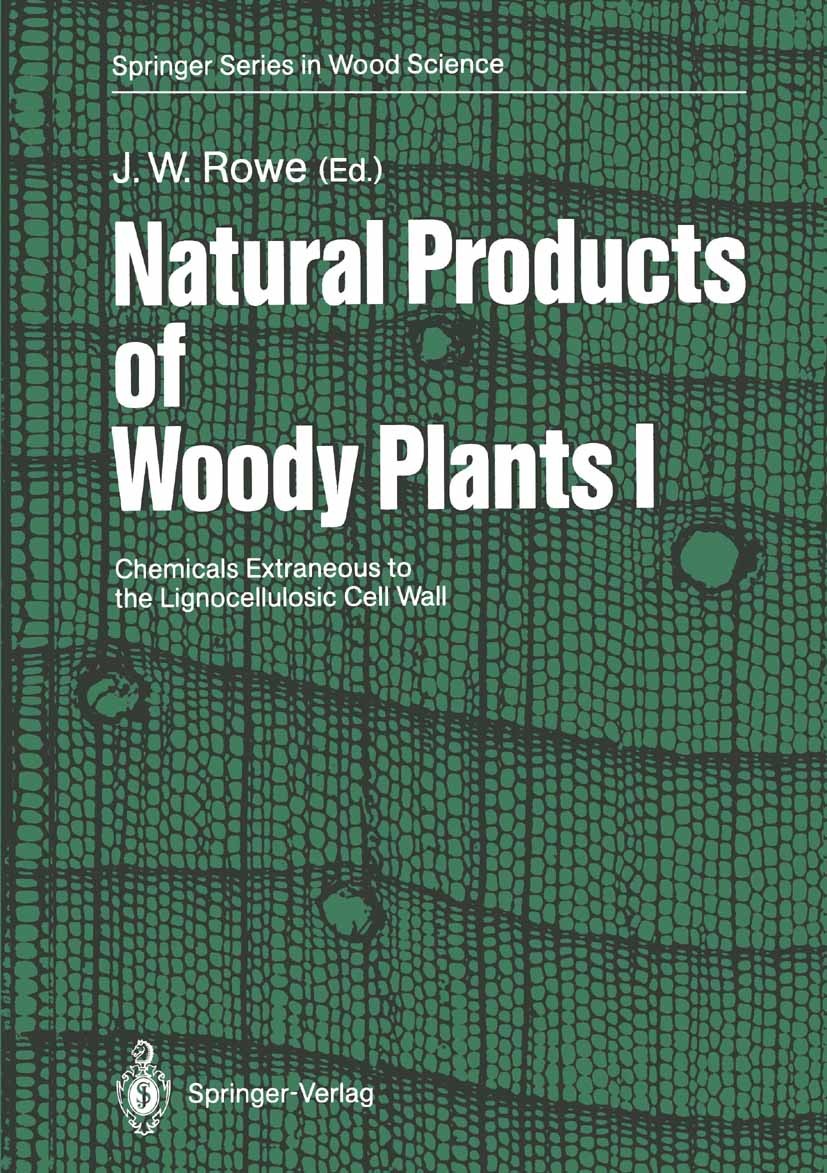| 書目名稱 | Natural Products of Woody Plants | | 副標題 | Chemicals Extraneous | | 編輯 | John W. Rowe | | 視頻video | http://file.papertrans.cn/662/661910/661910.mp4 | | 叢書名稱 | Springer Series in Wood Science | | 圖書封面 |  | | 描述 | Wood as found in trees and bushes was of primary importance to ancient humans in their struggle to control their environment. Subsequent evolution through the Bronze and Iron Ages up to our present technologically advanced society has hardly diminished the importance of wood. Today, its role as a source of paper products, furniture, building materials, and fuel is still of major significance. Wood consists of a mixture of polymers, often referred to as lignocellulose. The cellulose micro fibrils consist of an immensely strong, linear polymer of glucose. They are associated with smaller, more complex polymers composed of various sugars called hemicelluloses. These polysaccharides are embedded in an amorphous phenylpropane polymer, lignin, creating a remarkably strong com- posite structure, the lignocellulosic cell wall. Wood also contains materials that are largely extraneous to this lignocellulosic cell wall. These extracellular substances can range from less than 1070 to about 35% of the dry weight of the wood, but the usual range is 2% -10%. Among these components are the mineral constituents, salts of calcium, potassium, sodium, and other metals, particularly those present in th | | 出版日期 | Book 1989 | | 關鍵詞 | Oligosaccharid; Woody plant; evolution; natural product; natural products; nitrogen; plants; protein; protei | | 版次 | 1 | | doi | https://doi.org/10.1007/978-3-642-74075-6 | | isbn_softcover | 978-3-642-74077-0 | | isbn_ebook | 978-3-642-74075-6Series ISSN 1431-8563 | | issn_series | 1431-8563 | | copyright | Springer-Verlag Berlin Heidelberg 1989 |
The information of publication is updating

|
|
 |Archiver|手機版|小黑屋|
派博傳思國際
( 京公網(wǎng)安備110108008328)
GMT+8, 2025-10-20 05:18
|Archiver|手機版|小黑屋|
派博傳思國際
( 京公網(wǎng)安備110108008328)
GMT+8, 2025-10-20 05:18


